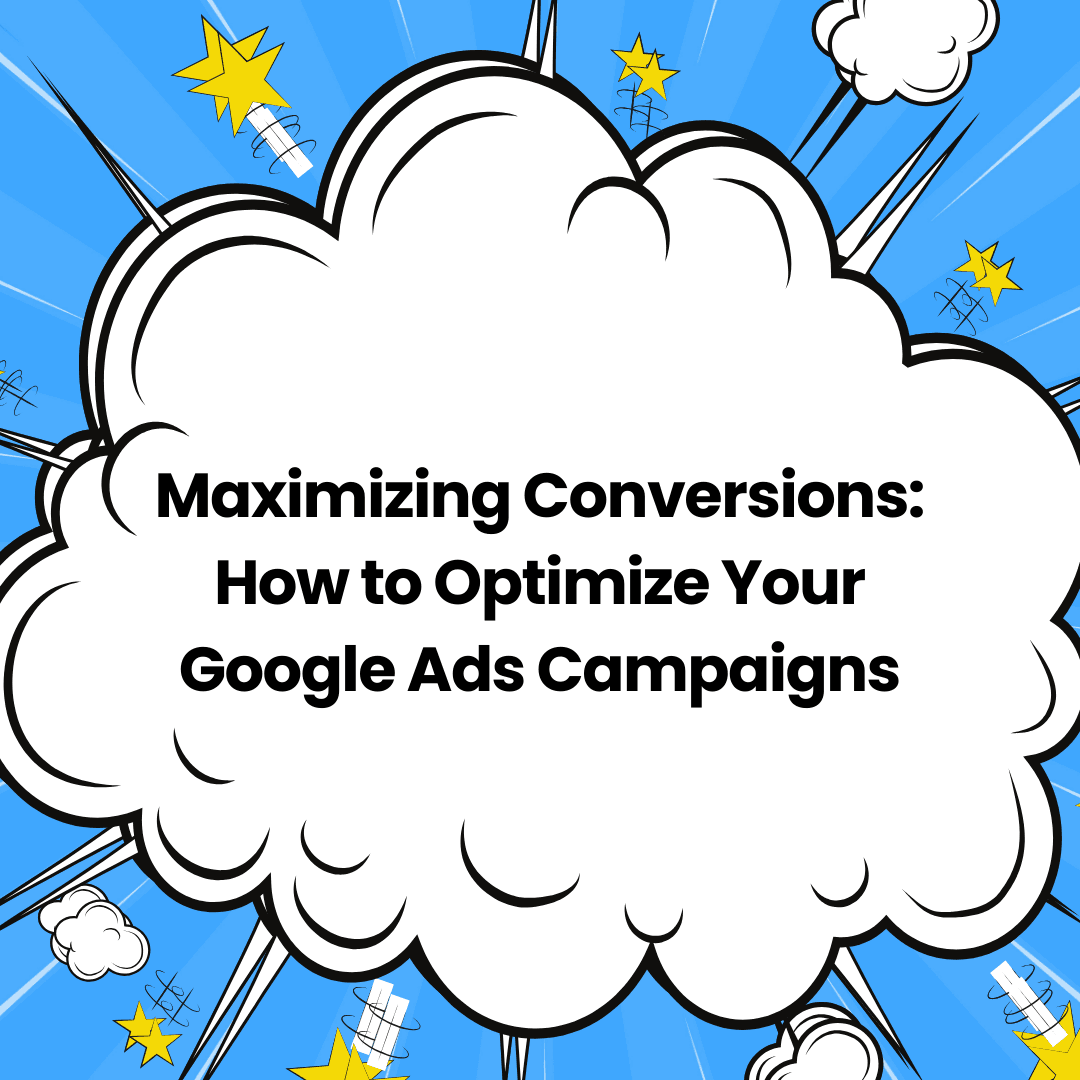Google Ads is an incredibly powerful platform for driving traffic to your business, but the true success lies in converting that traffic into paying customers. Optimizing your Google Ads campaign for conversions involves a combination of strategy, testing, and analysis. Below are some proven tips to help you increase your conversion rate and get more out of your advertising budget.

Set Up Conversion Tracking
Before you can optimize for conversions, you need to track them. First and foremost, Google Ads offers robust tracking tools that allow you to monitor actions on your website, such as purchases, sign-ups, or form submissions. Setting up conversion tracking ensures you can evaluate the effectiveness of your campaigns and make data-driven decisions moving forward.
Refine Your Keyword Strategy
Keywords are the backbone of any Google Ads campaign. To begin with, focus on highly targeted, relevant keywords to optimize for conversions. Rather than using broad match keywords, consider long-tail keywords or phrase match keywords that are more likely to convert. Furthermore, analyze search query reports to identify irrelevant or low-performing keywords and exclude them from your campaigns. This will allow you to reach more qualified prospects.
Use Negative Keywords
Negative keywords help prevent your ads from showing up for irrelevant searches. For instance, if you’re selling luxury perfumes and a user searches for “cheap perfumes,” you can use negative keywords like “cheap” or “discount” to prevent your ad from being triggered. By doing so, you ensure that your ads are only shown to people who are more likely to convert.
Create Compelling Ad Copy
Your ad copy plays a crucial role in conversion. In other words, it should clearly highlight the unique value proposition of your product or service. Include action-oriented language that encourages users to take the next step, such as “Shop Now,” “Get Started,” or “Learn More.” Additionally, ensure that your ad copy aligns with the user’s search intent and provides a compelling reason for them to click.
Optimize Landing Pages
Once a user clicks on your ad, they should land on a page that is highly relevant to their search query. This is critical because a well-designed landing page can significantly boost your conversion rate. Ensure the landing page has a clear call to action, is mobile-friendly, loads quickly, and provides all the information the user needs to take action. Ultimately, a seamless user experience will drive higher conversions.
Use Ad Extensions
Ad extensions give your ads extra visibility and can increase the chances of conversion. For example, extensions such as site link extensions, call extensions, and location extensions can provide additional information to users, making your ad more engaging and relevant. As a result, these extensions can lead to higher click-through rates (CTR) and ultimately higher conversion rates.
Bid on High-Intent Keywords
High-intent keywords are those that indicate the user is closer to making a purchase decision. For instance, terms like “buy,” “best price,” or “reviews” show that the user is further along in their buying journey. Therefore, focus on bidding for these high-intent keywords to attract users who are more likely to convert.
Implement Smart Bidding Strategies
Google Ads offers automated bidding strategies designed to maximize conversions, such as Target CPA (Cost Per Acquisition) and Target ROAS (Return on Ad Spend). In particular, these strategies use machine learning to optimize bids based on the likelihood of a conversion. If you’re looking to improve your conversion rate, consider using one of these smart bidding strategies.
A/B Test Your Ads
To find the best performing ad variations, it’s important to conduct A/B testing. By testing different ad headlines, descriptions, calls to action, and landing pages, you can identify which elements are driving the highest conversion rate. Once you’ve determined the most effective variations, you can refine your ads over time to improve their performance.
Monitor and Adjust Regularly
Google Ads requires continuous optimization. In addition, regularly review your campaigns, identify underperforming keywords or ads, and make adjustments as needed. You should also monitor key metrics like click-through rate (CTR), cost-per-click (CPC), and conversion rate to determine how well your campaign is performing. If necessary, make changes to ensure ongoing success.
Focus on User Experience
A smooth and seamless user experience is essential for converting visitors. Therefore, make sure your website is easy to navigate, your checkout process is straightforward, and your forms are simple to complete. A poor user experience can cause visitors to abandon your site before they convert, so invest in improving site performance and usability.
Leverage Remarketing
Remarketing is a powerful tool for driving conversions by targeting users who have already interacted with your business. For example, create remarketing campaigns that target users who visited your site but didn’t convert. These users are already familiar with your brand, so they are more likely to convert the second time around.
Optimize for Mobile
More people are using mobile devices to browse the web and make purchases. In fact, mobile traffic continues to increase every year. Make sure your Google Ads campaigns are optimized for mobile users. This includes having mobile-friendly landing pages, fast loading speeds, and mobile-optimized ads. By doing this, you ensure a smooth experience for users, no matter what device they are using.
Conclusion
By implementing these strategies and continuously optimizing your Google Ads campaigns, you can significantly improve your conversion rates and get the most out of your ad spend. Remember, Google Ads is a dynamic platform that requires constant attention and adjustment. Stay focused on providing value to your audience, and the conversions will follow.
Feel free to contact us for a free consultation.

